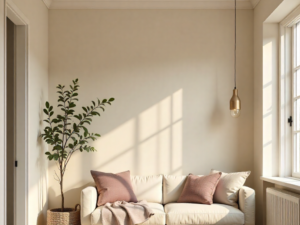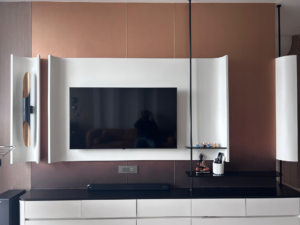Is your walls feeling a little…bland? You’ve chosen the perfect color, arranged the furniture just right, and yet something is missing. That flat, smooth finish can leave a room feeling sterile and unfinished, no matter how carefully you’ve decorated. The solution? It’s time to embrace the power of wall texture.
It adds depth, personality, and a designer elegance that flat paint just cannot attain. Whether you are a do-it-yourselfer or want to leave it in the hands of experts, this article takes you through the why, the how, and the wow of updating your space with wall texture.
Why You Need Wall Texture (It’s Not Just About Looks)
Though aesthetics are a large portion of the attraction, the advantages of incorporating wall texture run much deeper. First, it provides visual stimulation. Light bounces off textured surfaces, creating subtle shadows and highlights that add movement and depth to a room. Second, it’s a sensible option: wall texture is great at disguising flaws such as cracks, dents, or irregular surfaces, making it more resilient and long-term than plain paint.
In addition, a textured feature wall can designate zones within an open-plan space, providing a natural point of focus that grounds the room. And don’t forget the sense of warmth and comfort it provides—textured walls are welcoming and lived-in, transforming the whole ambiance of your home.
Benefits of Wall Texture :-
- More durable than plain painted walls.
- Hides imperfections (cracks, uneven surfaces, dents) better than flat paint.
- Works well for feature walls to create focal points.
- Enhances the overall value and uniqueness of the property.
Types of Wall Texture
There is a wall texture for any style, from country to super-contemporary. Here are a couple of favorites:
Stone Wall Texture: Lends a natural, weathered look, bringing the outdoors inside with its touchable, rough-textured beauty.
Ozone Wall Texture: Produces a light, cloudy, or marbling effect—airy, atmospheric, and ideal for giving a room elegance without dominating it.
Lime Texture: Provides a variety of finishes, from matte and chalky to lightly polished, for an air-permeable, sustainable choice.
Stucco Paint Texture: Provides a rugged, rustic appearance inspired by Mediterranean villas.
3D Wall Texture Design: Features a dramatic impact with stacked, dimensional designs that are both tactile and visually striking.
Texture Ideas:
Need ideas to get started? Here’s a summary of styles and uses:
The Classics
Venetian plaster gives a rich, marble-like effect, and skip trowel gives a more delicate, handmade look. Both are ageless options that suit formal and casual spaces equally well.
The Naturalists
Limewash gives moody, chalky depth, and reclaimed wood (such as shiplap or board and batten) gives rustic, farmhouse feel. These textures praise the beauty of imperfection and nature.
The Modern Makers
For those who love contemporary design, 3D wall panels create geometric drama, and microcement delivers a seamless, industrial vibe. These options are perfect for making a bold, artistic statement.
The DIY & Renter-Friendly
If you’re not ready for a permanent change, grasscloth wallpaper offers natural fiber texture without the mess, and peel-and-stick panels mimic everything from brick to 3D designs—perfect for low-commitment upgrades.
Maintenance and Care for Your wall Textured
Keeping your lovely wall texture clean is simpler than you believe. For dust, a feather duster or soft microfiber cloth weekly will do. For more aggressive textures such as stucco, a vacuum with brush attachment can be used to get into crevices. For stains, a damp sponge and mild soap will do most of the time—use no harsh chemicals to keep the finish in tact.
Conclusion: Your Wall Texture Journey Starts Now
Adding wall texture doesn’t have to be complicated or expensive. It’s about creativity, personality, and breaking free from flat, boring walls. Start small—with an accent wall in the living room, bedroom, or entryway—and see how this simple change transforms the entire feel of your home.
Ready to take the plunge? We’d love to hear which texture you’re most excited to try! Share your ideas and plans in the comments below.




